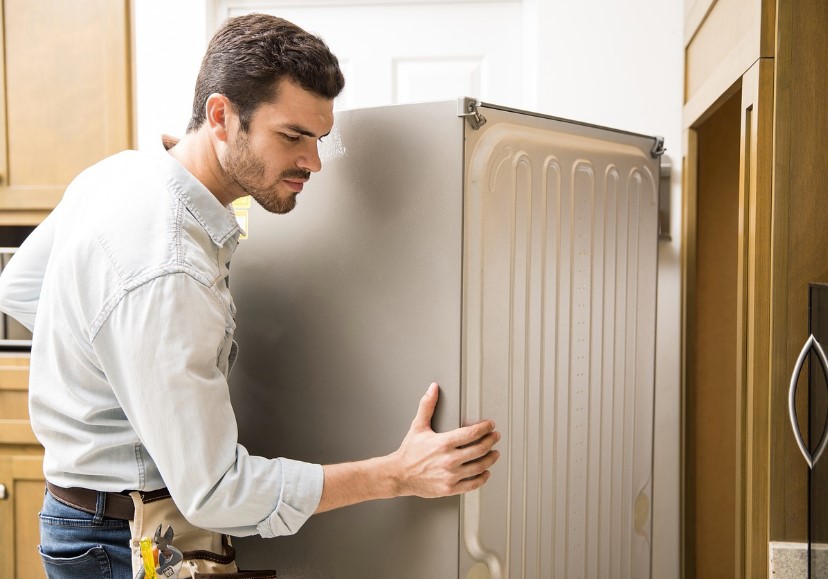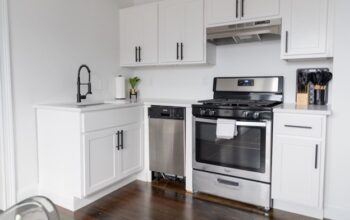Your refrigerator is a vital appliance in your kitchen, responsible for keeping your food fresh and safe to eat. So, when it suddenly stops working, it can be a cause for concern.
Not only can a malfunctioning fridge lead to spoiled food and wasted money, but it can also disrupt your daily routine.
In this article, we will explore the steps you can take when your fridge stops working to troubleshoot the issue and potentially save yourself from a costly repair or replacement.
Check the Basics
Before you panic and call a technician, it’s essential to perform some basic checks to rule out simple problems that might be causing your fridge to stop working:
- Power Supply: Make sure the refrigerator is plugged in and that the outlet is functioning correctly. Sometimes, a loose or unplugged power cord can be the culprit.
- Circuit Breaker: Check your home’s circuit breaker to ensure that the circuit supplying power to your fridge hasn’t tripped. Reset it if necessary.
- Temperature Settings: Verify that the temperature settings inside the fridge and freezer compartments are correctly adjusted. If they are set too high or too low, it can affect the fridge’s cooling ability.
- Condenser Coils: The condenser coils of a refrigerator can gather dust and dirt, which makes it harder for the appliance to cool effectively. For greater effectiveness, vacuum or scrub them clean.
If you’re in possession of a Samsung fridge and you find that is still not working despite troubleshooting, it’s worth considering professional assistance and genuine Samsung fridge parts for any necessary replacements or repairs.
Assess the Cooling System
If your fridge is still not working after checking the basics, it’s time to investigate the cooling system. The cooling system is the heart of your refrigerator, and issues here can cause the appliance to stop cooling effectively.
- Listen for Compressor Noise: When the fridge is running correctly, you should hear a low humming or buzzing noise from the compressor. If this sound is absent, it could indicate a problem with the compressor.
- Inspect the Evaporator Fan: The refrigerator and freezer are kept cool by the evaporator fan. The refrigerator won’t adequately chill if it’s broken. If the fan isn’t making any sound when you listen for it, you might need to replace it.
- Inspect the Evaporator Coils for Excessive Frost Buildup: This can cause cooling issues. If you see frost, consider unplugging the refrigerator for a few hours, then plugging it back in to defrost the freezer.
- Thermostat and Sensors: Test the thermostat and temperature sensors to ensure they are functioning correctly. A faulty thermostat can lead to inconsistent temperatures.
Inspect the Seal and Door
A damaged or worn-out door seal (also known as a gasket) can lead to warm air seeping into the fridge, causing it to work harder to maintain the desired temperature.
- Check the Door Seal: Inspect the seal by running your hand along the edges to feel for any gaps, cracks, or tears. Replace the seal if it is damaged.
- Test the Door Alignment: Make sure the refrigerator door is closing properly and is aligned with the frame. Misaligned doors can lead to air leakage.
Condenser Fan and Coils Must be Cleaned
In order to dissipate the heat produced by the refrigerator’s compressor, the condenser fan and coils are essential components. They may become clogged with dust and dirt over time, which will decrease their effectiveness.
- Condenser Coil Cleaning: To clean the condenser coils underneath or at the back of the refrigerator, use a coil brush or a vacuum cleaner. This straightforward maintenance procedure can greatly enhance cooling performance.
- Check the Condenser Fan: Make sure the condenser fan is functional and clean. It could need to be replaced if it isn’t operating.
Consider Professional Help
If you’ve checked all the above steps and your fridge is still not working, it may be time to call a professional appliance repair technician.
They have the knowledge and tools to diagnose and fix more complex issues, such as refrigerant leaks, compressor problems, or electrical faults.
While it may cost you for their services, it could save you money in the long run by preventing food spoilage and the need for a costly fridge replacement.
A malfunctioning refrigerator can disrupt your daily life and potentially lead to food waste and financial losses. When your fridge stops working, it’s essential to take a systematic approach to troubleshoot and address the issue.
By checking the basics, assessing the cooling system, inspecting the door seal, and performing regular maintenance, you can often resolve the problem on your own.
However, if the issue persists, don’t hesitate to seek professional assistance to ensure your refrigerator is back to keeping your food fresh and safe.



